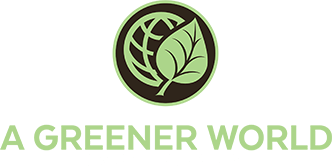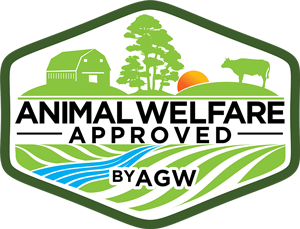Guidelines for Working Dogs
Working dogs can be of valuable assistance to farmers to both protect and handle the birds and animals on their farm. Livestock Guardian Dogs (LGD) may be used with goats, sheep, cattle and poultry. Herding dogs are commonly used with sheep and cattle.
This paper provides guidelines for Animal Welfare Approved farms on the appropriate management of working dogs on the farm. Adherence to points covered in this paper does not confer approved status to the working dogs on an Animal Welfare Approved farm. Unlike farmed livestock, dogs on the approved farm may not be sold or transferred as being Certified Animal Welfare Approved by AGW.
All dogs working with or around livestock must be properly trained and under control at all times.
1.0 Dog selection
1.0.1 Appropriate breeds of dog must be selected depending on whether the task is herding or guarding livestock.
1.0.2 Breeds of dog must be chosen with consideration of their ability to thrive in the prevailing terrain and climatic conditions of the farm.
1.0.3 There must be a suitable ratio of guard animals for the number of livestock to be protected.
1.0.4 There must be a suitable number of guard animals for the terrain and habitat that must be covered.
Note: Relatively flat, open areas can be adequately covered by one livestock guardian dog. When brush, timber, ravines, and hills are in the pasture more than one dog may be required.
1.0.5 Dogs must be physically sound and of good conformation.
1.0.6 Dogs must be free from genetic problems such as hip dysplasia and eye problems.
1.0.7 Dogs must not have an overbite or other mouth problems.
2.0 Dog training
2.0.1 Dogs must be trained not to injure the livestock being guarded or herded.
Note: Most guard dogs do not grow out of their puppy stages until 18 to 24 months. Before that time, even with instincts, dogs may need help understanding acceptable behaviour.
2.0.2 Dogs must be trained to ensure they do not roam too far or endanger themselves on roads.
2.0.3 Dangle sticks or other solid objects attached to the dog’s collar that knock into the dog’s legs are prohibited.
2.0.4 A tire, piece of PVC pipe or similar object may be attached as a drag to a long line on the dog’s collar as long as:
2.0.4.1 The dog would be at risk of injury if it wandered from the area it is supposed to be in.
2.0.4.2 There is no other suitable method to train the dog not to leave the area it is supposed to be in.
2.0.4.3 The line is at least 10 ft long.
2.0.4.4 The drag is not used in an area where the dog can get tangled or injured.
2.0.4.5 The drag is only used as part of a planned training program.
2.0.4.6 The dog is under close supervision at all times while it is wearing the drag.
2.0.5 Electric training collars or electric fence and collar systems must only be used if a dog cannot be kept within a particular area by any other means.
3.0 Health management
3.0.1 A health plan emphasising prevention of illness or injury must be prepared in consultation with the farm’s qualified expert advisor to promote positive health and limit the need for treatment. It must address:
3.0.1.1 Nutrition.
3.0.1.2 Vaccinations.
3.0.1.3 Parasite control.
3.0.1.4 Breeding and/or neutering.
3.0.1.5 Medical emergencies.
3.0.1.6 Euthanasia.
3.0.2 All dogs must be thoroughly inspected at least once per 24 hours.
Note: During this inspection, the welfare of each dog must be observed. If any animal is not in a state of well-being, it must be cared for immediately and corrective measures must be taken.
Derogation may be granted for operations that can show, in extensive systems, welfare would not be compromised by fewer inspections.
3.0.3 Dogs must be regularly checked for condition, injury, ticks and stickers in coat, feet and ears.
3.0.4 Matts and burrs in the dog’s coat must be removed periodically.
Note: A matted coat may lead to skin infections. Depending on climate and breed and hair type it may sometimes be necessary to clip the dog.
3.0.5 Dogs must have their teeth checked at least twice a year.
3.0.6 Vaccinations must be used to control avoidable diseases. The following are recommended:
3.0.6.1 Rabies vaccine every three years or as required by law.
3.0.6.2 Initial puppy vaccination series as recommended by a veterinarian.
3.0.6.3 Booster vaccinations every 1-3 years as recommended for local area.
3.0.7 Sick or injured dogs must be treated immediately to minimise pain and distress.
Note: Finding untreated injured or ill dogs may be grounds for removal from the program.
3.0.8 Dogs must be protected from and/or treated for parasite infestations.
Note: Parasites include internal parasites such as round worms, tape worms and heart worms; and external parasites such as fleas and ticks.
Prevention is preferred and there are a number of oral/topical options that are easy to administer and offer excellent protection for dogs. Some herding dogs are sensitive to these medications. Options must be discussed with a qualified expert before use on herding breeds.
3.0.9 Dogs experiencing pain or suffering from which they are unlikely to recover must humanely euthanised.
3.0.10 Euthanasia must be carried out in a manner that renders the dog immediately insensible to pain.
3.0.11 Euthanising dogs in a way that causes unnecessary pain or suffering is prohibited.
3.0.12 Dogs not intended for breeding should be spayed or neutered by a veterinarian before puberty to avoid unwanted pregnancies.
4.0 Emergencies
4.0.1 The plan to care for or house livestock in an emergency situation must include provision for herding or guardian dogs.
Note: Emergency situations may include fire, flood, drought and/or snow storms.
5.0 Dog Management
5.0.1 Dogs must not be below a 2 in body condition score.
Note: Dogs at BCS 2 have ribs that are easily felt under a slight fat cover. Bones in the tail base area are raised, and easily felt under a slight fat cover. Viewed from the side dogs at BCS 2 have an abdominal tuck and when viewed from above have a marked hourglass shape (see also Appendix 1).
5.0.2 Special care must be taken when mixing dogs to socialise them to one another as safely as possible and to minimise harm to individuals.
5.0.3 Dogs due to give birth must be provided a safe, clean, warm place to whelp.
5.0.4 Puppies must be checked shortly after birth and de-wormed and vaccinated on a set schedule.
5.0.5 All facilities, equipment, fittings and pasture used by the dogs must be free of debris.
5.0.6 All facilities, equipment, fittings, fencing and pasture areas must be designed and maintained in such a way that they do not pose a risk, or inflict injury or damage to the dogs.
5.0.7 Any poison baits and rodenticides must be kept out of the dog’s reach.
5.0.8 Farmers should alert their immediate neighbours that there are livestock guardian dogs on their land.
5.0.9 If traps and snares are set in the neighbouring area care must be taken to ensure that dogs do not come into contact with them.
6.0 Food and water
6.0.1 Dogs must have free access to clean, fresh water at all times.
6.0.2 Dogs must have a feeding plan that will guarantee a well-balanced and wholesome nutritional regime appropriate for their age and activity level.
6.0.3 When self feeders are used these must be constructed such that only dogs can access the feed.
6.0.4 When self feeders are used these must be checked regularly to ensure they do not run empty.
6.0.5 Food and water must be distributed in a way that eliminates competition.
6.0.6 Dogs must not be allowed to feed on dead livestock or other carcasses.
7.0 Shelter
7.0.1 Dogs must have continuous access as required to shelter that protects them from weather extremes, including high winds, sleet and heavy snows, and sun.
7.0.2 Fresh clean water must be available to dogs in shelter.
7.0.3 Particular attention must be paid to providing shade/shelter for long-haired breeds in hot weather.
Note: It may be necessary to clip or shear the coat of a long haired dog in hot weather.
7.0.4 Shelters and housing must have solid floors.
Note: Floors may be natural – the surface of the ground or pasture – or artificial. Standard 7.0.4 does not apply to range, pasture or forage area, unless the area is covered by a house or designated as a shelter area.
7.0.5 The house or shelter must be managed to eliminate ammonia, dampness and mold.
7.0.6 Accommodations must be constructed so that they can be easily and effectively cleaned.
8.0 Handling
8.0.1 Efforts must be made to develop positive relationships between the farmer and their dogs through gentle handling.
8.0.2 Abuse or maltreatment of dogs is prohibited.
8.0.3 Dogs must not be permanently tethered or confined.
8.0.4 Dogs may be temporarily placed in a pen or crate chosen for the breed and size of dog; that is placed in a safe and quiet location with no risk of overheating or chilling.
8.0.5 If a dog is temporarily restrained it must not be able to entangle itself in fencing or other obstacles.
8.0.6 If a dog is transported on the public highway in an open backed truck it must be restrained for its own safety.

